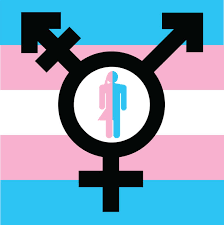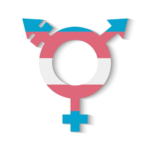In today’s world, discussions about gender identity and expression are more prominent than ever. As society evolves, so does our understanding of the diverse spectrum of gender identities. The term "transgender" is widely recognized, but many people seek to understand what it really means and what other words might be synonymous with it. In this article, we will delve into the intricacies of terminology related to transgender identities, aiming to foster a better understanding of this complex subject.
Understanding the Basics: What Does Transgender Mean?
Transgender is an umbrella term that describes individuals whose gender identity differs from the sex they were assigned at birth. This includes a wide range of gender identities, such as those who identify as male, female, or non-binary. Importantly, being transgender is not a sexual orientation; rather, it relates specifically to gender identity. For many, transitioning—whether socially, medically, or both—can be an essential part of affirming their true selves.Gender Change Gender
Understanding what it means to be transgender also involves recognizing the experiences and challenges faced by transgender individuals. These may include discrimination, societal pressures, and issues related to access to healthcare. By acknowledging these challenges, we can begin to foster a more inclusive and respectful environment for everyone, regardless of their gender identity.
Exploring Different Terms for Transgender Individuals
While "transgender" is the most commonly used term, there are various other expressions that people may prefer. For instance, some individuals may identify as "trans," which is a shorthand version. Others might use "genderqueer," "genderfluid," or "non-binary" to describe their identity. Each term emphasizes different facets of gender experience and identity, so it’s essential to listen and respect each individual’s preference.
The language surrounding gender identity is constantly evolving, and it’s helpful to stay updated on these changes. Different communities may prefer different terminology based on cultural contexts or personal experiences. Being open to learning about and understanding these variations can enhance our conversations and relationships with transgender individuals.
Gender Identity vs. Sexual Orientation: Key Differences
It’s crucial to differentiate between gender identity and sexual orientation, as they are often mistakenly conflated. Gender identity refers to a person’s internal sense of their gender, whether that’s male, female, both, neither, or anywhere along the gender spectrum. On the other hand, sexual orientation relates to whom a person is attracted to, such as being heterosexual, homosexual, bisexual, or pansexual.
Understanding these distinctions can help in promoting more respectful and informed discussions. For example, a transgender person may identify as heterosexual, homosexual, or anything else; their gender identity does not dictate their sexual orientation. By recognizing these differences, we foster a more nuanced view of individual experiences and identities.
Common Synonyms for Transgender You Should Know
In addition to "transgender," some common synonyms include "transsexual," although this term can be somewhat controversial and is often associated specifically with those who undergo medical transition. Another term is "gender nonconforming," which describes individuals whose gender expression differs from societal expectations based on their assigned sex at birth. "Gender expansive" is also gaining traction, as it encompasses a broader understanding of gender beyond binary classifications.
It’s worth noting that the appropriateness of these terms can vary based on personal preferences and contexts. Engaging in conversations and asking individuals how they identify can lead to better understanding and respectful communication.
The Importance of Using Inclusive Language in Society
Using inclusive language matters because it creates an environment where all individuals feel validated and respected. Language shapes our perceptions and can either reinforce stereotypes or foster acceptance. For example, referring to someone by their chosen name and pronouns can significantly impact their sense of belonging and identity.
Furthermore, inclusive language can lead to greater awareness and understanding within communities. As more people familiarize themselves with inclusive terms, the stigma surrounding gender diversity can diminish. Promoting inclusive language in schools, workplaces, and everyday conversations can contribute to a more equitable society for everyone.
How Language Shapes Our Understanding of Gender Identity
Language plays a crucial role in shaping societal attitudes towards gender identity. The words we choose to use can either empower or marginalize individuals. When positive and inclusive language is adopted, it can help break down barriers and encourage open conversations about gender identity.
On the flip side, derogatory or outdated terms can perpetuate misunderstandings and discrimination. By actively choosing language that validates people’s experiences, we contribute to a culture of acceptance and understanding. This shift can lead to more supportive environments for those exploring or affirming their gender identities.
The Evolution of Terminology in the LGBTQ+ Community
As society’s understanding of gender and sexuality has evolved, so too has the language used within the LGBTQ+ community. Terms that were once widely accepted can become outdated or even harmful as the community advocates for more accurate and respectful language. For example, the term "transvestite" has largely fallen out of favor and has been replaced by more respectful and accurate terms focusing on individual identity.
This evolution highlights the importance of staying informed and being open to change. Language is dynamic, and as our understanding of gender continues to grow, so will the terminology we use to describe these identities. Engaging with the community and listening to individuals’ preferences is vital in this ongoing journey.
Why It Matters: Respecting Gender Identity Through Words
Respecting individuals’ gender identities through the words we choose is crucial for fostering dignity and acceptance. Using the correct terminology can affirm a person’s identity and promote feelings of safety and belonging. Conversely, misgendering someone or using incorrect terms can lead to feelings of alienation and distress.
Ultimately, every person deserves to have their identity respected, and language is a powerful tool in achieving this. By being mindful of our language and the impact it has, we can contribute to a more respectful and inclusive society, where everyone can freely express their true selves without fear of judgment.
In conclusion, understanding and respecting the terminology surrounding transgender identities is essential in our efforts to create an inclusive society. As language evolves, so too should our willingness to adapt and learn. By fostering open conversations about gender identity and using inclusive language, we can support the diverse experiences of individuals and promote a culture of acceptance. Let’s continue to educate ourselves and others, ensuring that everyone feels seen, heard, and respected for who they truly are.


